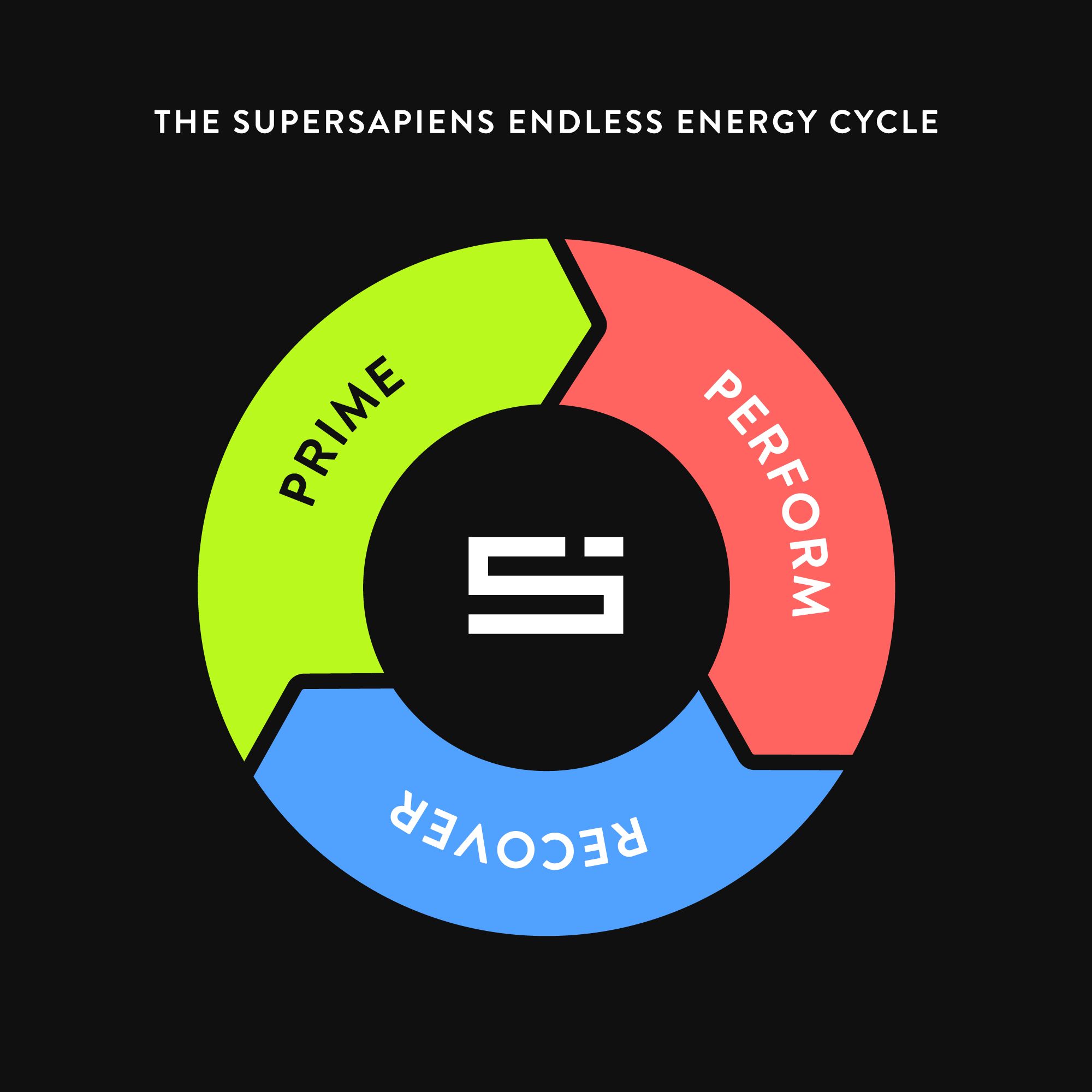Ready to manage your fuel intake and optimize athletic performance using Supersapiens?
This is a good place to start.
As athletes, we often look at training as building blocks. A widely used concept to visualize this is the pyramid system, which has more general training on the lower levels of the pyramid, building through some more specific training in the middle tier, and all the way up into competition.
If you’re not familiar with the pyramid system, just think: The broader the base, the higher we can build.
To use a triathlete as an example, training will generally progress through phases. Start with ‘base building’ or building volume: long hours of each discipline without too much intensity just to get some good adaptations both peripherally and centrally. Also, and perhaps more importantly, to focus on improving technique and efficiency. Then, things progress into higher intensity or ‘brick’ sessions where things become more specific. The next phase is saved for race-specific work: race pace (or goal race pace) and simulation races where your aim is to avoid distractions and focus on what’s essential. The final phase is, well, racing. Plus tapering and mentally preparing.
Back to the pyramid: consider these phases as a pyramid structure. Each phase is the next level higher. The crux of this is that each phase forms the base for the next. The broader the base, the higher it can be. The analogy being top race performance is underpinned or limited by the work done beforehand throughout training, before competition time.
So how does this pyramid concept relate to glucose management and the Supersapiens system?
As athletes, we are in a constant cycle of PRIME, PERFORM, and RECOVER. The ‘base building’ (general preparation where volume and “practice” is built) is the equivalent of the initial period of using the Supersapiens system. First is the learning phase, using the in-app onboarding guide and gaining insight into what your personal baseline or ‘normal’ is. You will start to learn optimal ways to fuel during the PRIME, PERFORM, and RECOVER cycle, shown in Figure 2. In this "build" phase you are simply building your knowledge and understanding.
Once you have insight to PRIMING, PERFORMING, and RECOVERY nutrition as individual components, you will start to understand their interplay and flow on effects.

During the next phase, akin to more specific aspects of training where ‘brick sessions’ and the likes are performed, you start to refine your fueling with Supersapiens. You will better understand ways to avoid spiking or being too high for too long during RECOVER phase fueling, and then really understand where you need to PRIME more. You may also experiment with your PERFORM phase nutrition to find fuels that work better for you.
This is also the phase where an athlete can more intensively train their gut. As mentioned in the dietary periodization article, higher intake of carbohydrates (to cope with high energy demands during intense performances) may require an athlete to ‘train their gut’ (expose it to increasingly higher carbohydrate loads in a periodized manner) to absorb fuel more efficiently and not cause gastrointestinal issues. The good news for you is that it is reasonably possible as we are seeing athletes managing huge fuel intakes. But the flip side of this is that it takes time, experience, and proper planning. Remember? Fueling is the fourth discipline of triathlon.
In the final phase of the process, when you are preparing for the race, simulation or practice races are time for you start executing all your plans. This is in regards to both peak performance and how to fuel it. Early in this phase, you need to start dialing in your race day fuel plans. Your strategy needs testing and fine tuning for specific in-competition needs. This is to ensure, logistically, you can intake both the type and the amount of fuel you need for race pace. Similarly, it will give you a good indication if your planned nutrition is appropriate enough to keep your glucose level high and stable, or if you need to adjust your fuel type, timing, or amount.
In this phase, you will be looking to use the system to aid in your pre-race preparation for fuel store optimization (maximizing glycogen stores) as well as your race day nutrition strategy. Whatever your fueling strategy, Supersapiens can help you validate and iterate off of the the model developed at lower levels of your pyramid. This is particularly helpful if you have access to your glucose data.
As with training, you normally reflect on your plan after the race. Post race, you can review how your fueling impacted your racing and optimize your fueling strategy more for the next race (which you will practice and refine during the next training cycle). This may include more training of the gut. Or a fuel change. Or even drive changes in your RECOVER and PRIME nutrition strategies.
So when you’re thinking of how to periodize the use of the Supersapiens ecosystem, just think: The “pyramid system” and the cycles of refinement. The parallel to this training metaphor works well with how you train to manage your energy. Which makes sense: these two ‘disciplines’ – performance and energy management – are completely intertwined.
REFERENCES:
Jeukendrup, Asker. “A step towards personalized sports nutrition: carbohydrate intake during exercise.” Sports medicine (Auckland, N.Z.) vol. 44 Suppl 1,Suppl 1 (2014): S25-33. doi:10.1007/s40279-014-0148-z
